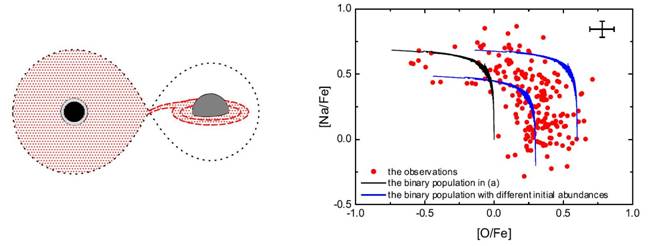Recently, a paper on globular clusters by Dengkai Jiang and Zhanwen Han of Yunnan Observatories was published in the Astrophysical Journal (2014, ApJ, 789, 88).
Globular clusters are structures that consist of hundreds of thousands to millions of gravitationally bound stars, and owe their names to their globular shape. They are considered living fossils of the earlier universe, and can unlock clues regarding the distant history of the Milky Way. It was once believed that all stars within a globular cluster formed at the same epoch, thereby providing tests for stellar evolution theories, yet observations by the Hubble Space Telescope indicate that this is not necessarily the case for all globular clusters. Not only can stars from the same globular cluster vary in chemical composition, their H-R diagram distributions imply that they are not even of the same age.
This discrepancy is a challenge to our understanding of the formation and evolution of globular clusters, therefore, it is essential that an explanation be found for the existence of the stellar populations of different ages. Many hypotheses have been proposed, such as that a globular cluster can have two separate starbursts, or that such globular clusters are in fact the results of mergers. However, no globular cluster is known to have more than one starburst, and theoretical calculations show that the typical collision timescale between globular clusters is too large to be practical. In short, none of these hypotheses explain the phenomenon.
The group under Prof. Han propose that this peculiar phenomenon may be the result of a population of binary systems. During star formation, some stars form binaries, while others do not. While they may have been formed at the same epoch, binary system members tend to influence each other, leading to physical processes such as mergers or common envelopes, thereby resulting in different physical properties such as luminosities, temperatures, and chemical compositions. It is proposed that this leads to the apparent population diversity in globular clusters.
